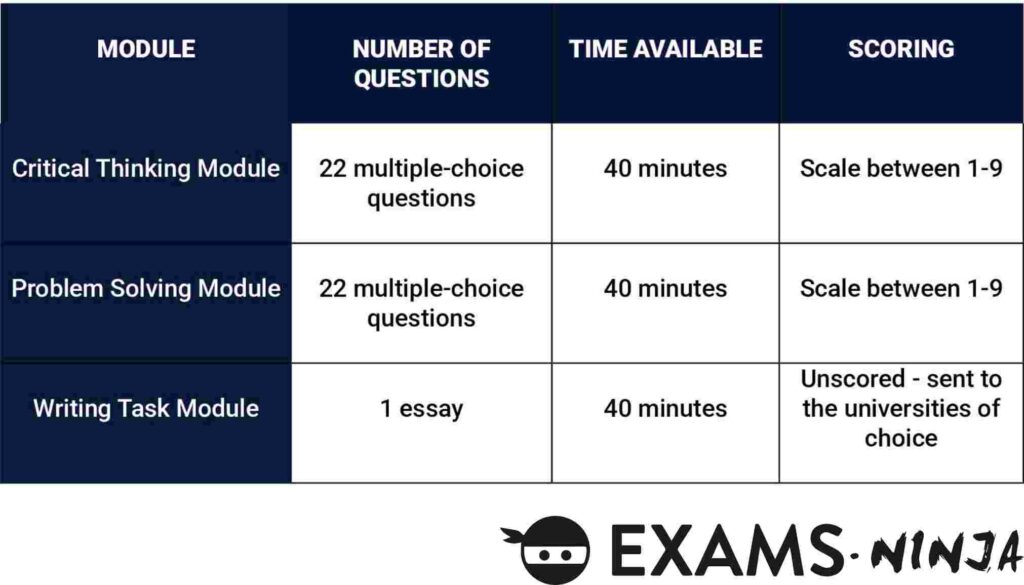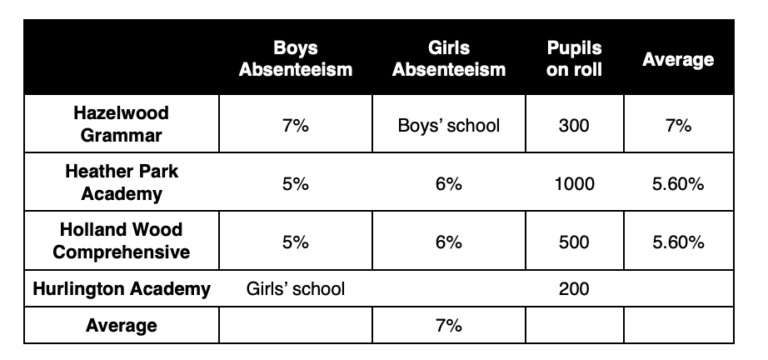TARA Guides
The Ultimate Guide to TARA Module 2: Problem Solving
Written by: Nick Morfidis
If you’re preparing to sit the TARA, you may already know the exam consists of three modules. In this guide, we’ll dive into TARA’s Critical Thinking module to help you understand what it covers and walk into the test centre with confidence.
1/5
THE BASICS OF THE TARA
If you’re still unsure what the TARA is all about, don’t worry – we’ll recap all the basics for you below.

What is the TARA?
The Test of Academic Reasoning for Admissions (TARA) is a computer-based, non-subject-specific test lasting 120 minutes. It was developed by UAT UK in collaboration with Pearson VUE.
TARA is currently used by University College London (UCL) as a requirement for entry into a range of academic disciplines, including:
- BSc Computer Science (G400)
- MEng Computer Science (G402)
- BA European Social and Political Studies (R990)
- BA European Social and Political Studies: Dual Degree (R992)
- BA International Social and Political Studies (LV01)
- MEng Computer Science and Mathematics (G430)
- BSc Management Science (N991)
- MSci Management Science (N990)
- MEng Robotics and Artificial Intelligence (H700)
- BSc Sociology (L301)
- BSc Social Sciences (L300)
- BSc Social Sciences with Data Science (LG33)
If you are applying to UCL, it’s always a good idea to double-check whether the TARA is required through the official course page for your chosen programme.
TARA Format
The test is divided into three compulsory modules: Critical Thinking, Problem Solving, and Writing Task, each lasting 40 minutes.
Module 1 – Critical Thinking: This section assesses your critical thinking skills through 22 multiple-choice questions, each offering five answer choices.
Module 2 – Problem Solving: This section evaluates your skills in solving unfamiliar problems. You will need a grasp of basic mathematics to succeed. Like the Critical Thinking module, it includes 22 multiple-choice questions.
Module 3 – Writing Task: You’ll be presented with three essay prompts but you’ll only need to choose one to answer. Your response should be strategic, structured, and concise, as there’s a 750-word limit.
TARA Structure
How is the TARA scored?
When it comes to scoring, Modules 1 and 2 of the TARA exam – Critical Thinking and Problem Solving – are marked on a scale from 1 to 9, with 1 being the lowest and 9 the highest possible score. Your score is reported to one decimal place, giving a more precise reflection of your performance.
There’s no penalty for incorrect answers, so it’s always in your best interest to attempt every question.
Unlike the first two modules, the Writing Task is not scored. Instead, your written response is sent directly to the university (or universities) you’re applying to. Each university can then use this piece at their own discretion to assess your application.
When is the TARA sat?
Applicants taking the TARA will sit the exam on either 15th/16th October (Test Sitting 1), or 12th/13th January (Test Sitting 2), at a Pearson VUE test centre. You can only sit the TARA once per admissions cycle.
To sit the TARA, you’ll need to register online between 31st July and 29th September for Test Sitting 1 and between 27th October and 19th December for Test Sitting 2.
For some countries, UAT UK has confirmed that only one testing day will be available per test window, so if you’re an international applicant, it’s important to check your available options during registration to avoid any issues.
That covers all the TARA basics for now. If you’d like to dive deeper, check out the TARA Basics Complete Guide.
2/5
WHAT TO EXPECT FROM TARA'S PROBLEM SOLVING MODULE
TARA’s Problem Solving module is designed to assess your logical reasoning skills and how effectively you can work with numerical information. Rather than simply testing your maths ability, it challenges you to tackle new, unfamiliar problems that may not have straightforward solutions. And, as is often the case with real-world problems, TARA’s problem-solving questions may include additional information that is irrelevant to the solution – your job is to identify what is relevant.
Don’t be intimidated – the questions aren’t overly difficult. With a bit of logical thinking and the ability to quickly interpret information in various formats, you’ll be well-prepared to succeed.
The module features 22 multiple-choice questions, each with five answer options. You earn a mark for every correct response, and there are no penalties for incorrect answers, so it’s best to attempt all questions, even if you’re not completely confident.
Dictionaries and calculators are not allowed during the test but you will be provided with an erasable booklet in case you need to take any notes or work out.
The TARA is a critical part of your application, let us help you get it right!
With our TARA Preparation Platform, you’ll get access to guides, tutorials and practice questions for every section of the TARA. Create your free account today and find out how Exams.Ninja can boost your score!
3/5
THE ESSENTIAL SKILLS FOR TARA PROBLEM SOLVING
As mentioned earlier, problem solving questions in TARA are designed to test your core mathematical skills. If you’re not currently studying maths, there’s no need to worry – the level of maths required is no more advanced than what you would have covered at GCSE or an equivalent qualification.
The challenge in these questions does not come from complex calculations, but rather from applying straightforward maths to realistic, everyday scenarios. This could include anything from interpreting train schedules to working out postage costs.
Still, you’ll need to be confident with certain mathematical skills. Let’s break down the areas of maths you should review, based on the TARA specification:
Number Concepts
- Fractions: Basic understanding of fractions, like knowing what half or a quarter of something is.
- Place Value: Knowing what digits in a number represent, like in the number 3754, where the ‘7’ represents 700.
- Percentages: Understanding percentages, like how 1% is the same as 1 out of every 100 things. Or if 80% of a cake is eaten, 20% is still left.
Numerical Operations
- Basic Math: You’ll need to know how to add, subtract, multiply, and divide.
- Percentage Calculations: Understanding how to calculate percentages in real-life situations. For example, if a £10 item is on sale for 20% off, figuring out how much the customer would pay.
- Everyday Calculations: You don’t need to handle really complicated math with fractions and decimals, but you should know how to calculate things like averages (mean).
Quantities
- Time & Calendar: Basic knowledge of time (like hours and minutes) and the calendar.
- Money: Understanding currency and doing simple money-related calculations.
- Measurements: Familiarity with units of measurement such as kilometers, meters, grams, and kilograms.
Unit Relationships
You need to know basic conversion between units, like:
• 1 kilometer = 1000 meters
• 1 meter = 100 centimeters
• 1 kilogram = 1000 grams
You won’t need to know more complex conversions, like feet or gallons, for this module.
Space and Spatial Reasoning
- Area: Knowing how to calculate the area of simple shapes like rectangles.
- Perimeter: Being able to figure out the perimeter (the total length around an object).
- Volume: Understanding how to calculate the volume of simple 3D objects like boxes.
Tables and Graphs
- Graphs/Charts: You’ll need to be able to read information from graphs and charts and use that information for problem-solving.
- Tables: Similarly, you’ll need to extract useful data from tables.
Exams.Ninja Tip
If your current studies don’t heavily depend on maths, you’ll need to sharpen your skills ready for the TARA. Even though all of this knowledge may seem basic on paper, there’s a good chance you’ll have forgotten something since your last mathematics exam!
The best way to see if there are any gaps in your knowledge is to take a mock test. The TARA only covers mathematics to a GCSE level, so you won’t need to be taking a TMUA or MAT past paper! If you find that you’ve breezed through it with no issues, then great! You shouldn’t have any trouble tackling the maths included in the TARA. And if there were any areas that you struggled with, then it’s time to start revising!
4/5
THE QUESTION TYPES OF THE TARA PROBLEM SOLVING
Most problem solving questions in Module 2 of the TARA can be grouped into three main categories. Each focuses on a skill beyond straightforward mathematics, so let’s explore these three question types and look at how you can tackle them in the exam.
Relevant Selection
We’ve already touched on this idea, but remember that TARA questions won’t be as clear-cut as a standard maths exercise. They’re designed to mirror real-world problem solving, which means you’ll often be given extra context and information. Of course, not all of this information will be useful – in fact, it’s rare that you’ll get only the details you need, in both TARA and real life!
Some TARA questions will specifically test your ability to identify the relevant information. These may use graphs, tables, or lists, but they all have the same purpose: to overload you with unnecessary details that you’ll need to filter out. You’ll still be solving a core mathematical problem in the end, but first you must cut through the noise and pick out exactly what matters before you even think about calculating a solution.
Since there are 22 questions and just 40 minutes to answer them, you might wonder if there’s a shortcut. Unfortunately, there isn’t a simple way to skip straight to the answer. As we always say, reading everything carefully is essential. It might feel like wasted time if you end up reading irrelevant details, but rushing risks missing something vital. Losing a mark because you overlooked an important clue means you’ll have wasted all the time you spent on that question anyway.
Exams.Ninja Tip
Some questions lend themselves to the process of elimination. For instance, you might need to identify entries from a table who meet several criteria. If you read the question first and know exactly what to look for, you can quickly rule out options: if just one requirement isn’t met, you can immediately disregard that individual. This won’t apply to every question, but it can be a helpful tactic to save a bit of time.
Finding Procedures
A typical TARA question won’t spell out exactly what kind of mathematical method you need to use to solve it. You’ll usually be presented with a set of data and a question, and it can be tricky to know where to begin – and that’s exactly the challenge of this question type. Even if the calculations themselves aren’t too demanding, the real difficulty lies in figuring out what steps you need to take.
Since all of these questions are multiple choice, you already have an advantage when tackling them. After carefully reading both the question and the answer options, your next move is to look for a connection between them. Ask yourself, “How can I get from the information provided to one of these answers?”
One effective strategy is to work backwards from each answer option. Even if your first attempt doesn’t exactly match what the question is asking, you can still check whether you’re on the right track by seeing if your result is close to the target. From there, you can apply your procedure to each possible answer until you find one that fits.
Exams.Ninja Tip
Remember, the maths involved in TARA isn’t especially complex, so most of the procedures you’ll need will rely on the “four number rules” – addition, subtraction, multiplication, and division. If you’re unsure where to start, try experimenting with different combinations of these four operations to see how close you can get to the correct answer.
Identifying Similarity
These questions are designed to assess your ability to interpret and work with data presented in different forms. You might be asked to identify a relationship between sets of data or match two specific data points based on the context of the question. No matter what the question asks, you will always need to fully understand the information provided to you.
Your first steps with these questions should be to clarify exactly what is being asked, and then carefully review all of the data to get a sense of what you’re dealing with. This is a true test of your data analysis skills, since you’ll need to pick out and apply the relevant data from the information given. Often, you’ll encounter two different types of data in two separate formats, meaning you’ll have to convert them into a common framework in order to connect the pieces and find the answer.
Exams.Ninja Tip
Throughout TARA, you’ll see plenty of visual elements – such as graphs and tables – included in the questions. These are helpful on their own, but you can make them even more powerful by incorporating them into your notes.
In many ways, these questions combine elements of the other two question types. You’ll need to find similarities across pieces of data, then work out the correct procedure to arrive at your answer. Because you’re handling multiple types of data at once, these questions may seem more challenging at first. However, the data sets involved are usually more limited than in other question types, so your search for relevant details shouldn’t be too overwhelming. The real challenge is making sense of all the data you’ve been given.
Get access to true difficulty TARA questions.
The TARA Preparation Platform is the most effective way to boost you understanding of critical thinking! With hundreds of questions, each with a worked solution, as well as a collection of full exam papers at your disposal, you’ll become an expert thinker in no time! Click below to create your free account!
5/5
TARA PROBLEM SOLVING PRACTICE QUESTIONS
As the TARA is a newly introduced admissions test, there are currently no TARA past papers available. However, we have selected a set of past BMAT questions that match the same question types expected to appear in TARA.
Let’s explore what you should expect. Try to answer each question and then check the correct answers to see if your reasoning was on the right track. Remember to identify the type of question for each one.
Finding Procedures – Practice Question 1
In December, the price of a television in a shop was £P.
At the start of January, the price was reduced by £350.
At the start of February, the price was further reduced by 30% of the January price.
After the two reductions, the overall decrease in the price of the television was 44%.
What was P?
A. 625
B. 750
C. 1540
D. 1750
E. 2100
The correct answer is D.
This question is correctly solved by setting up an equation that models both successive reductions. First, the price was reduced by £350, leaving P−350. Then, it was reduced by 30%, meaning the final price is 70% of that amount, or 0.7×(P−350). Since the problem states the total decrease from the original price was 44%, the final price must be 56% of P, or 0.56P. Setting these two expressions equal and solving gives the correct original price of £1750. This approach captures the logical process of applying sequential percentage reductions and linking them to the overall change.
Finding Procedures – Practice Question 2
To get to work, Sylvie first catches a bus and then catches a train.
The probability that the bus is on time is 0.6
The probability that the bus is late is 0.4
If the bus is on time, then the probability that she will catch the train is 0.8
If the bus is late, then the probability that she will catch the train is 0.6
Given that Sylvie catches the train, what is the probability that the bus was on time?
A. 1/3
B. 12/25
C. 2/5
D. 3/5
E. 2/3
The correct answer is E.
- B = bus on time
- B’ = bus late
- T = catches train
Given:
- P(B)= 0.6
- P(B’)= 0.4
- P(T|B)= 0.8
- P(T|B’) = 0.6
Probability the bus was on time given that Sylvie caught the train (Bayes theorem):
P(B|T) = P(T|B) x P(B) / P(T)
P(T) = P(T|B) x P(B) + P(T|B’) x P (B’) = 0.8 x 0.6 + 0.4 = 0.48 + 0.24 = 0.72
P(B|T) = 0.8 x 0.6 / 0.72 = 0.48/0.72 = ⅔
Relevant Selection – Practice Question 1
Some rabbits have a genetic condition. The dominant allele codes for this condition. A homozygous dominant rabbit mated with a rabbit that did not have the condition. They had three offspring. One of the offspring then mated with a rabbit that did not have the condition and they also produced three offspring. Two of the offspring had the condition and one did not. One body cell that is in early interphase is taken from each of the rabbits in these three generations.
What is the total number of copies of the allele for the condition in this collection of cells?
A. 6
B. 7
C. 8
D. 11
E. 12
The correct answer is B.
Let A be the dominant allele (condition), a recessive.
Gen 1:
- AA (2 A alleles)
- aa (0 A alleles)
Gen 2: (offspring of AA × aa): all 3 are Aa → 1 A allele each
3 A alleles
Gen 3: (offspring of Aa × aa, 3 total):
- 2 Aa → 1 A allele each (2 total)
- 1 aa → 0 A alleles
Total rabbits sampled: 8
Total A alleles:
2 (Gen 1) + 3 (Gen 2) + 2 (Gen 3) = 7
Identifying Similarities – Practice Question 1
Some of the information is missing from the above table. What is the rate of girls’ absenteeism at Hurlington Academy?
A) 6.5%
B) 7%
C) 9%
D) 11.5%
E) 13%
The correct answer is D.
We can first work out the rate of girls’ absenteeism. First we need to work out how many of the pupils at Heather Park Academy and Holland Wood Comprehensive are girls. Let g be the number of girls in Heather Park Academy. Then 0.06(g)+0.05(1000-g)=(1000)(0.056). Then 0.06g-0.05g=56-50. Then 0.01g=6, so g = 600. Hence 600 pupils at Heather Park Academy are girls. The proportions at Holland Wood Comprehensive are the same but there are half as many pupils, so 900 pupils at the two schools combined are girls.
The average absenteeism of girls is 6.1%. We know that 900 of the 1100 girls have an average absenteeism rate of 6%. Let the average absenteeism rate of girls at Hurlington Academy be r. Then 900 x 0.06 +200r = 0.07×1100. Hence 54+200r=77. 77-54 = 200r. 23/200 = r. r=0.115. Hence, the rate of absenteeism amongst girls at Hurlington Academy is 11.5%.
Question 5: Identifying the Principle of an Argument
‘End-to-end encryption’ of online messaging services is here to stay, and should be welcomed with enthusiasm, not resisted. Its adoption by services such as WhatsApp has admittedly caused some alarm in government circles because of the protection it gives to criminals and terrorist groups, and the restrictions it places on the state’s legitimate and important powers of surveillance. But the fact is that WhatsApp is just one of many services offering encryption – there are now hundreds of similar applications on the market, and millions of customers happily using them. And the technology is even used by government websites, despite the anxieties of a handful of politicians and law enforcement agencies.
Which one of the following best illustrates the principle used in the above argument?
A. Since lots of people are confidently skating on the lake, we must assume that it is safe to do so.
B. Since there is nothing illegal about owning and flying a drone, there is no reason why I shouldn’t fly one.
C. Since measures to stop athletes taking them have failed, performance-enhancing drugs should be permitted.
D. Since high-speed broadband gives businesses a competitive edge, it should be available to all.
E. Since electric scooters have obvious environmental benefits, they should not be banned on public roads.
The correct answer is A.
The argument relies on the idea that widespread, confident use of a technology (like WhatsApp’s encryption) suggests it is safe or acceptable, despite concerns. This matches the principle in A about many people confidently skating implying safety.
Question 6: Weakening an Argument
Sports stars should not be dropped from their teams because of their behaviour off the pitch. The task of selectors is to select the best players, based solely on their potential for helping their team to win matches. The most talented sportspeople are rewarded very generously for their ability and achievements at a time of life when they are young enough to be able to enjoy partying and clubbing until the early hours of the morning. It is therefore unreasonable to blame them for enjoying those rewards and that lifestyle. Team selectors should not allow envy or nostalgia to bias them against young people who work hard and play hard.
Which one of the following, if true, would most weaken the above argument?
A. Most team selectors are former players themselves.
B. Sportspeople will not play at their best if they spend their nights at clubs and parties.
C. Stories about sports stars behaving badly often appear in magazines aimed at young people.
D. Sponsors are likely to withdraw their support from a team if players are the subject of adverse publicity.
E. Top sportspeople are now paid far more than they were one or two generations ago.
The correct answer is B.
The argument is that players shouldn’t be judged for partying since it doesn’t affect their performance. B weakens this by stating that partying negatively affects performance, which undermines the argument’s main point.
That was a lot to work through, but the work doesn’t stop there! There are loads more questions to try out, so get as many done as you can to perfect your TARA technique!
We’ll have even more TARA practice questions on Exams.Ninja soon, so keep an eye out!
We’ve covered a lot of ground, and unfortunately, there’s still more to go. You’ve still got Problem Solving and Writing Task to worry about, as well as maintaining you’re critical thinking skills! That’s why it’s so important to make the most of your preparation time and the resources you have available to you.
The TARA is intended to be a difficult test in order to separate a group of very talented people. That thought may put a lot of pressure on you, but remember that you’ve already come this far, so you deserve to be ranked amongst these talented people (because you are one)!
It’s time to start thinking about your university application, including your revision for the TARA!
Exams.Ninja’s TARA Preparation Platform will help you prepare for the big day. You’ll have access to tons of amaing resources, including:
Training Temple- Access expert tutorials alongside our tips, tricks and revision guides to build up you thinking abilities.
Practice Dojo- Hundreds practice questions, complete with expertly crafted worked solutions, all available for you to attempt at any time.
Exam Arena- Try out our collection of TARA papers in realistic exam conditions. Boost your confidence in time for the real thing!
Start your TARA prep today and maximise your chances of success.




